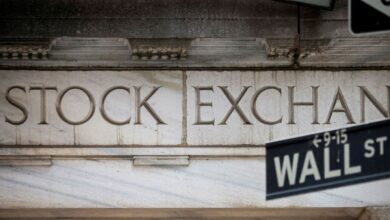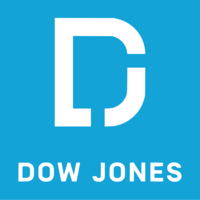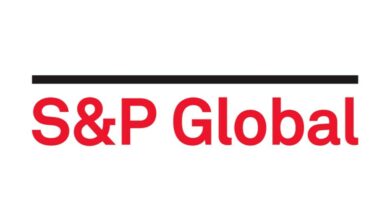US consumer inflation resumes downward trend as domestic demand cools

WASHINGTON, May 15 (Reuters) – U.S. consumer prices increased less than expected in April, suggesting that inflation resumed its downward trend at the start of the second quarter in a boost to financial market expectations for a September interest rate cut.
Hopes of the Federal Reserve starting its easing cycle this year were further bolstered by other data on Wednesday showing retail sales were unexpectedly flat last month. The reports suggested that domestic demand was cooling, which will be welcomed by officials at the U.S. central bank as they try to engineer a “soft-landing” for the economy.
“The economic data are picture perfect in favor of interest rate cuts,” said Christopher Rupkey, chief economist at FWDBONDS. “The country is not out of the woods from the threat of inflation, but we can start to see the end of the forest.”
The consumer price index rose 0.3% last month after advancing 0.4% in March and February, the Labor Department’s Bureau of Labor Statistics said. The higher cost of living has detracted from the economy’s resilience, and is a campaign theme for the Nov. 5 presidential election.
President Joe Biden said prices were still too high but argued that his agenda, which includes building two million homes and taking on Big Pharma to lower prescription drug prices “will give families breathing room.” Donald Trump’s campaign blamed inflation on the Biden administration’s policies and touted the former president’s America First agenda of low taxes, lower prices and higher wages.
The cost of shelter, which includes rents, increased 0.4% for the third straight month. Gasoline prices shot up 2.8%. These two categories contributed over 70% of the increase in the CPI. Food prices were unchanged. Prices at the supermarket fell 0.2%, with eggs dropping 7.3%. Meat, fish, fruits and vegetables as well as nonalcoholic beverages were also cheaper.
But cereals and bakery products cost more, while prices for dairy products rose marginally.
In the 12 months through April, the CPI increased 3.4% after climbing 3.5% in March. Economists polled by Reuters had forecast the CPI gaining 0.4% on the month and 3.4% year-on-year. The annual increase in consumer prices has slowed from a peak of 9.1% in June 2022.
Inflation accelerated in the first quarter amid strong domestic demand after moderating for much of last year. Last month’s slowdown was a relief after data on Tuesday showed a jump in producer prices in April. Inflation is being driven by providers of services like motor vehicle insurance, housing and healthcare catching up to higher costs.
Economists expect price pressures to ebb this quarter, and inflation to gradually move toward the Fed’s 2% target as the labor market is cooling. Fed Chair Jerome Powell said on Tuesday “I expect that inflation will move back down … on a monthly basis to levels that were more like the lower readings that we were having last year.”
Financial markets saw a roughly 73% probably of a rate cut in September, up from 69% before the data. A few economists anticipate the Fed will start lowering borrowing costs in July.
The central bank early this month left its benchmark overnight interest rate unchanged in the current 5.25%-5.50% range, where it has been since July. The Fed has raised its policy rate by 525 basis points since March 2022.
Stocks on Wall Street were trading higher. The dollar fell against a basket of currencies. U.S. Treasury prices rose.
RENTS STICKY
Excluding the volatile food and energy components, the CPI rose 0.3% in April after advancing 0.4% for three straight months. That lowered the three-month annualized increase in the so-called core CPI to a 4.1% rate from a 4.5% rate.
Rents increased 0.4%. Owners’ equivalent rent (OER), a measure of the amount homeowners would pay to rent or would earn from renting their property, also gained 0.4% after a similar rise in March and February. Market rents have been trending lower and that is expected to show in the CPI data this year.
Motor vehicle insurance increased 1.8% after surging 2.6% in March. There were also increases in the prices of personal care, recreation and education. The cost of healthcare rose 0.4%, reflecting an increase in hospital services.
Airline fares cost less. Overall, services gained 0.4% after advancing 0.5% in March. Excluding rents, they climbed 0.2% after surging 0.8% in March.
“Consumers’ decision to purchase more used cars, and continuing to drive old cars following the pandemic, is resulting in more repairs, which is pushing up premiums, rather than strong demand today for more immediate consumption,” said Richard de Chazal, macro analyst at William Blair.
Used cars and trucks prices dropped for a second consecutive month. New motor vehicle prices notched their third straight monthly decline. Prices for household furnishings and operations also fell. Core goods deflation continued, though the pace slowed. In the 12 months through April, the core CPI increased 3.6%. That was the smallest year-on-year gain since April 2021 and followed a 3.8% increase in March.
Based on the CPI and PPI data, economists estimated that the core personal consumption expenditures price index rose 0.2% in April after gaining 0.3% in March. That would lower the annual increase in core inflation to 2.7% from 2.8% in March.
A separate report from the Commerce Department’s Census Bureau showed retail sales unchanged in April after increasing 0.6% in March. Economists had forecast retail sales, which are mostly goods and are not adjusted for inflation, gaining 0.4%. Sales rose 3.0% year-on-year in April.
While demand is slowing, April’s flat reading was partly payback after Amazon’s spring promotion boosted sales in March. Sales at online retailers dropped 1.2% after surging 2.5% in March. Sales at food services and drinking places, the only services component in the report, gained 0.2%. Economists view dining out as a key indicator of household finances.
Retail sales excluding automobiles, gasoline, building materials and food services fell 0.3% last month after a downwardly revised 1.0% increase in March. These so-called retail sales were previously reported to have advanced 1.1% in March. Core retail sales correspond most closely with the consumer spending component of gross domestic product.
March’s core retail sales set a higher growth base for second-quarter consumer spending, despite the softness in April.
“We see this as the potential start of a softer consumer spending environment rather than the beginning of a sharp retrenchment,” said Oren Klachkin, an economist at Nationwide.
Reporting by Lucia Mutikani; Editing by Chizu Nomiyama and Andrea Ricci
Disclaimer: The views expressed in this article are those of the author and may not reflect those of Kitco Metals Inc. The author has made every effort to ensure accuracy of information provided; however, neither Kitco Metals Inc. nor the author can guarantee such accuracy. This article is strictly for informational purposes only. It is not a solicitation to make any exchange in commodities, securities or other financial instruments. Kitco Metals Inc. and the author of this article do not accept culpability for losses and/ or damages arising from the use of this publication.





